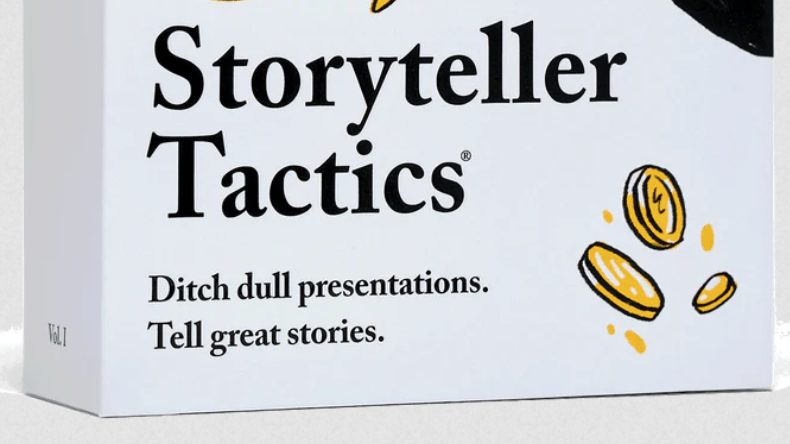Build Customer Relationships with Brand Stories
How did brand building become the norm, and how can you adapt your brand stories for better relationships in a crowded market?
Build Customer Relationships with Brand Stories
Today, a lot of entrepreneurs take brand building for granted. The ability to segment markets to attainable niches of hundreds of thousands instead of millions or billions has expanded small business opportunity. Businesses can be successful without dominating major markets and hammering down competitors.
But it wasn’t always that way. At one time executives read books like The Art of War as a guide to winning and dominating markets. The philosophy was, if you can own the shelf space, if you can dominate the airwaves with more advertising, if you could be in every magazine – and more than your competitors with more dominating messages – you’d win by sheer volume and weight. No need to listen. No need for conversation.
But that model is unrealistic in an ever expanding world of communication. With the emergence of “web 2.0,” the post-dot-com bubble online business, a key lesson was conversation – listening to your audience. The internet bubble was built on “leaders” creating a false sense of eternal growth, despite the realities of existing markets. An online grocery with 17% growth and 50% margins? That’s not how grocery works, and a few pixels and bites of data weren’t going to change reality. So, the internet bubble was in reality, a market dominance bubble. Predicated on the concepts of market warfare, it wasn’t predicated on the realities of the online world – conversation, information sharing, and Friendster then Facebook relationships.
The network of relationships and shared attitudes and opinions required a different way of thinking about business brands. Rather than being the biggest and boldest, they needed to be relatable and in conversation with their audiences.
David Altschul, co-founder of brand strategy company Character and the former director of advertising at Will Vinton Studios (now Laika Studios), presented this position at multiple international conferences and corporate trainings to encourage a different way of thinking about building business strength and longevity.
Business model – war
- dominate markets
- push competitors off of shelves
- maintain presence through share of
- voice
- win
business model – relationship
- listen
- interact
- tell stories
- build relationships
Relationships rely on stories –
how we went camping for a week and only ate spam and eggs because our plan to forage for edibles was foiled by our fear we would poison ourselves.
How our efforts to rehabilitate an old house like the flippers on TV ended up more like The Money Pit, but we learned a valuable lesson about commitment and when to stop.
Stories are filled with vim and vigor, hope, success, loss, regret. Stories can leave data behind and engage directly with the messy world of emotion, feelings, and desires.
How do businesses build stories into their brand? How do they stay consistent?
They do it through a variety of tools – brand platforms, communications platforms, and story frameworks.
Want to develop your capacity for relationship making brand stories? I’ve got three ways to go about about building your ability as a storyteller:
Take the Course!
The Branding Class for Artists, Small Businesses, and Anyone Who Wants to Make a Big Impact teaches the foundational framework of branding. Develop your brand platform, then connect it to your messaging. By the end of the course you’ll have actionable tools you will use each time you create content and messaging.

Get Storyteller Tactics
The Storyteller Tactics Deck includes 54 recipes that will immediately impact your storytelling. From pitch decks to ads, blogs, webinars, trainings, coaching, and more, these tools help you connect with your audience so they will remember, the “say, think and do” outcomes you are aiming for in your communications.
One-on-One Coaching
Stuck on the development of your communication pillars, key messages, or content? Let’s create a custom coaching plan to get you over the hump. The goal of coaching is to move you from doubt to clarity on your messages and communication tactics that help you build real resonance and relationships with your audience.
The deck is built to influence, educate, build awareness, lead – to basically attain all the big objectives businesses struggle with on a day to day basis – through powerful, well-placed stories.
Storyteller Tactics:
- a “storytelling system” to help identify what elements to develop based on where you are at in the story development journey
- “recipes,” which focus on your story objective (sell, motivate, inspire, explain, and so forth);
- “concepts” which are framing conventions – are you on a heroic journey, are you trying to solve a puzzle or mystery, or are you trying to balance order and chaos to make difficult things more manageable, or boring things more exciting?
- “exploration,” which is about getting the information you need to tell your story, whether through interviews, working together, or by some other means
- “character” cards that focus on roles – are you an expert? Is your customer the hero and you the guide?
- “function” cards that help you position your story in relation to what you are doing – pitching, selling, hunting for business insights and the like.
“structure” which digs into story arc options - “style” has to do with how you tell your story – what you put forward and what you hold back.
- and last, but not least, “organize.” A set of cards focused on how to collect and utilize stories over time.
Can Archetypes Improve Brand Tactics?
Can Archetypes Improve Brand Tactics? Draw on archetypal motivators and build customer relationships with Brand Tactics. Archetypes can improve brand tactics!The world is filled with brand gurus evangelizing their latest branding ideology, but few and far between are...
Archetypes for Brand Strategy
Archetypes for Brand Strategy How did archetypes become a part of brand building?As Brand Strategy developed as a distinct business practice in the US it took on a variety of stages. This isn’t going to be an academic examination of the progress, but more of a...
Storyteller Archetypes Introduction
Storyteller Archetypes Introduction Differentiate your brand. Daydream character types into branded realities.There’s a new deck that's coming out that I am really excited about that was created to complement the Storyteller Tactics deck. It's also going to work hand...
Brand Tactics and Storyteller Tactics Pip Decks, An introduction
Brand Tactics and Storyteller Tactics Pip Decks, An introductionThis article is derived from the video transcript discussing the Brand Tactics and Storyteller Tactics decks produced by Pip Decks: Good morning, my name is Alan Murdock. This is the first time I'm going...
Brand Relationship Tactics
Brand Relationship TacticsTips to build strong brands through deep customer and audience relationships.Build Strong Brands by Implementing Brand Relationship TacticsBranding is Relational As anyone involved in branding or brand strategy will tell you, “A brand is not...
From Brand Story to Brand Multiverse
From Brand Story to Brand MultiverseMake the shift and open up a multiverse of story opportunities.The Rise of Brand Story In the 1990’s, when companies realized that their brand was a predominant source of purchase decisions and loyalty, many long standing companies...
Apply Star Wars Storytelling Tactics to Your Brand
Apply Star Wars Storytelling Tactics to Your BrandYou can apply Star Wars storytelling tactics to your brand with these simple steps.In my most recent article I evaluated the first act of Star Wars IV: A New Hope using Storyteller Tactics by Pip Decks and Fabula story...









